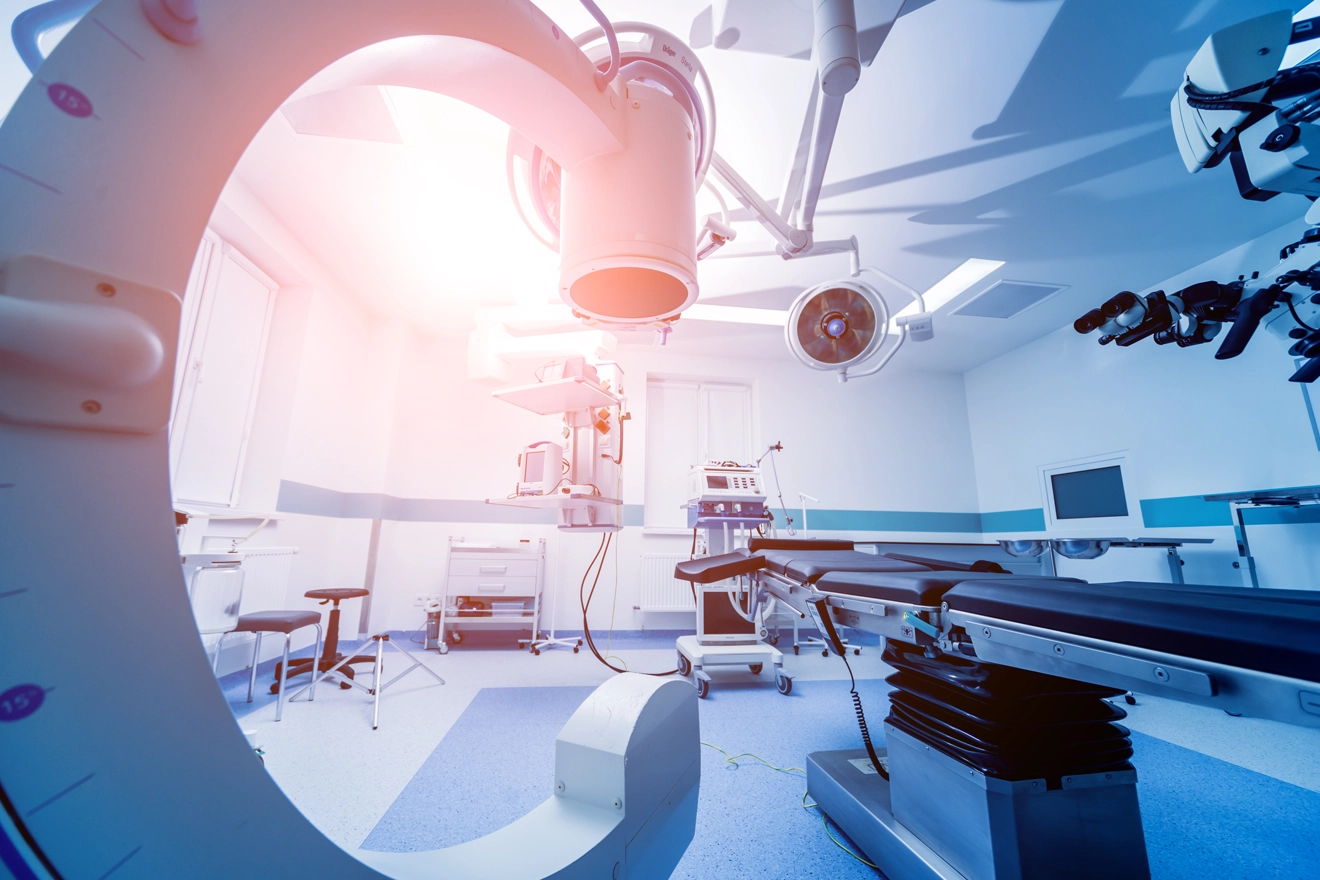
The Medical Device industry is booming, with new technologies emerging every other day. The year 2021, like 2020, has experienced continued disruption owing to subsequent waves of the COVID-19 pandemic. However, the MedTech industry and its regulations have been changing steadily and adapted to all the changes swiftly to ensure all requirements laid down by the Agencies are met within timelines. Also, the Agencies have been very cordial in addressing any challenges faced by the stakeholders. Here is a quick look back article on major medical device Regulatory changes across the globe.
USA
It has been a busy year at USFDA, with 20 device guidelines being finalized and many more draft guidance being released. These releases are in line with the USFDA’s FY 21-22 priority list released in 2020. The finalized guidelines are of mixed composition to cater to the COVID-19 pandemic and to balance the industry needs. Five (05) out of 20 finalized guidelines are related to the COVID-19 pandemic. A guideline on “Safer Technologies Program for Medical Devices” has been released. Though voluntary, manufacturers whose devices or device-led combination products qualify for this program can benefit. No further device-specific performance criteria under this program were released in 2021.
Certain changes have been introduced in the De Novo program, and guidelines on De Novo Classification Process, effect on the FDA review clock and goals, De novo Acceptance Review, and User fees and Refunds have been released. Technology-specific guidelines outlining the FDA’s recommendations on Assisted Reproduction Technology Devices, Peripheral Vascular Atherectomy Devices, Implanted Brain-Computer Interphase Devices, Surgical Staplers, and Staplers for Internal Use, Arthroscopy Pump Tuning Sets, and Devices used in Benign Prostatic Hyperplasia were released.
Few labeling guidelines clarifying the US FDA’s expectations concerning UDI requirements and an enforcement policy for the use of NDC numbers and NHRIC on device labels were published. Another major guideline on testing the safety and compatibility of devices in a Magnetic Resonance environment has been released. The guideline on Q-Submission Program has also been updated.
Further to the launch of the Digital Health Center of Excellence in late 2020, the USFDA has further prioritized activities in this space. A draft guidance on the use of digital health technologies for remote data acquisition and content to be included in premarket submissions for device software functions has been released. The USFDA, in collaboration with Health Canada and the MHRA, has jointly identified ten (10) guiding principles for the development of Good Machine Learning Practices (GMLP). A draft guidance on assessing the credibility of computational modeling and simulations in medical device submissions was released.
Canada
The major focus at Health Canada has been on COVID-19 related device products. Health Canada released Interim Order No.2 as the initial interim Order No. 1 was due for expiration. The Interim Order 1 is intended to permit importation and sale of covid COVID-19 related products that are non-compliant with Canadian standards. The order permits the manufacturers to keep manufacturing the products with equivalent standards valid for one year. Under Interim Order No.2, manufacturers and importers were allowed to obtain MDEL within six (06) months and required to have the labels in English and French languages.
The new medical device regulations with strengthened post-marketing surveillance and incident reporting requirements have been in effect from June 2021. Supporting guidance documents were released for preparation, retention, and submission of summary reports; completion of issue-related analyses of safety and effectiveness and criteria; and timeframes for incident reporting. Health Canada has introduced a mechanism to gather device risk information from foreign markets where the devices are sold in higher volumes for a longer period. Under the Foreign Risk Notification (FRN), the manufacturers are now required to notify Health Canada about foreign risks. The guideline on drug-medical device interface products was updated to clarify the classification of borderline products.
The draft guidance on medical device meetings to facilitate effective communication with the device stakeholders was released and would remain open for consultation till February 22, 2022. Another guidance on clinical evidence requirements for devices is open for consultation till February 01, 2022.
Europe
The Medical Devices Regulation (EU) 2017/745 has come into effect from May 26, 2021, after a year of postponement owing to COVID-19 disruption. All Notified Bodies (NB) accredited, so far, under the EU MDR (26) and IVDR (6) are located within Europe. Countries like Germany (7), Italy (6), Netherlands (3) have most NBs under the EU MDR, and Germany (3), Netherlands (2), France (1) have NBs accredited under IVDR.
The European Commission has proposed a partial delay in the implementation of the EU IVDR, which has won major support in the Parliament. Though the transition timelines for the EU IVDD certified devices have been extended, the Date of Application (DoA) of the regulations would still be May 26, 2022.
The political turbulence between Switzerland and the European Union (EU) has impacted the MedTech industry. The Mutual Recognition Agreement (MRA) between Switzerland and the EU lapsed on May 26, 2021, and the negotiations between the parties concluded without any concurrence on the Institutional Agreement (InstA). Switzerland is now regarded as a “third country,” requiring all Swiss Manufacturers to appoint an EAR, comply with the EU MDR and get their device CE certified. The European manufacturers must comply with Medical Device Ordinance (MedDO) and appoint a Swiss Authorized Representative (CH-REP). The MedDO was revised to align with the EU MDR, was released in July 2020, and has been in effect from May 26, 2021. The manufacturers who have placed the devices in the Swiss market before May 26, 2021, were required to complete their device registrations with Swissmedic by November 26, 2021. The first transition timeline for Class III, Class IIb implantable, and all active implantable devices passed on December 31, 2021. The next timelines for non-implantable Class IIb and IIa devices are due on March 31, 2022, and the third timeline for Class I devices, systems, and procedure packs are due on July 31, 2022.
In the United Kingdom, new medical device regulations have come into effect from January 1, 2021, after the end of transitional timelines. The three (03) grace periods, May 1, September 1, and December 31, 2021, have passed, swirling the companies to work towards identifying and appointing the UKRP and registering their respective devices with the UK MHRA.
APAC
INDIA:
As per S.O.775(E) 2019, the notified devices - CT scan Equipment, MRI Equipment, Defibrillators, PET Equipment, Dialysis Machine, X-Ray Machine, Bone Marrow Cell Separator, and all Implantables were to be registered with the CDSCO by April 1, 2021. Given the challenges faced due to COVID-19, the resolution of queries, auditing of facilities, testing of medical devices, and testing laboratories timelines have been extended till June 30, 2022. In case any incomplete applications were submitted earlier, all the other necessary documents must be submitted by March 31, 2022.
The timeline for the voluntary listing of devices was concluded on September 30, 2021, and all the medical devices and IVDs come under a compulsory registration scheme now. A detailed step-by-step procedure for the listing of devices has been published. The earlier gazette notification requires all Class A and Class B devices to be registered by September 30, 2022. Many requests for extension of timelines have been received from the stakeholders. The CDSCO is still evaluating the requests, and we are yet to hear the final say from the Agency. The manufacturers shall continue working on registration activities.
CDSCO has released risk classification information for each device category. Manufacturers shall refer to the same information to determine the risk class, registration pathway, and transition timelines. In 2021, the CDSCO approved eight (08) Medical Devices Testing Laboratories (MDTL), as required under the Medical Device Regulations, 2017 (MDR 2017). Since 2019 and by the end of 2021, a total of eighteen (18) testing laboratories have been approved cumulatively. The MDR, 2017 also has provisions for evaluating and approving the Notified Bodies to audit the manufacturing sites as a part of the device approval process. By the end of 2021, nine (09) Notified Bodies have been approved as per the MDR, 2017.
MALAYSIA:
The Medical Device Authority (MDA) of Malaysia has released a medical device grouping guideline to determine the appropriate grouping in the registration application for the medical devices. As per the guideline, various components in a medical device can be sold as separate components, individually customized packs, or groups and can be categorized as SINGLE, FAMILY, SYSTEM, and SET. These categories can be submitted in the medical device registration application. The MDA released the Code of Advertisement (COA) to provide guidance on ensuring that good marketing processes/practices are employed and the advertising messages are used to promote the quality use of the medical device in an ethical way.
AUSTRALIA:
The TGA reclassified active medical devices for therapy with a diagnostic function, active implantable medical devices (AIMD), and devices administering medicines or biologicals by inhalation. The guideline “Proposed refinements to the regulation of medical devices that are substances introduced into the human body via a body orifice or applied to the skin” was closed for consultation and is in effect. The definitions were amended to exclude devices containing systemically absorbed substances and with intended purpose in the stomach or lower GIT. Devices such as salivation stimulation and throat lozenges, saline nasal solution spray, anti-snoring devices, skin moisturizers, or barrier dressing have been unclassified from Class I to Class IIa devices. Other devices such as weight loss capsules that expand in the stomach to make one feel full were unclassified from Class IIa and IIb devices.
The TGA has addressed the most common questions regarding the off-label use of medical devices in its FAQ document. The document clarifies what 'off-label use' of a device means, whether Special Access Scheme Category B (SAS B) approval is required to supply a medical device for 'off-label use' if SAS B approval is given for 'off-label use' of a device in case the clinician or sponsor wishes to obtain approval. The document also details the TGA’s stand on advertising the 'off-label use' of the device. The TGA has released flowcharts on the regulation of software products as a medical device.
PHILIPPINES:
Philippines Food and Drug Administration (PFDA) has extended product licenses and certifications due for expiry between Jan 1, 2021, and June 30, 2021. Owing to the continuing COVID-19 pandemic, the licenses, and certificates due for expiry between July 1, 2021, and December 31, 2021, have been further extended for four (04) months after the date of expiry, provided the renewal applications were submitted to the PFDA beforehand. The renewal applications submitted within 120 days from the extended expiry date were subjected to additional fees.
The 2021 medical device Regulatory landscape has been dynamic, with the release of new guidelines regularly throughout the year. Despite the COVID-19 pandemic, the global Agencies have taken some meticulous steps in streamlining device-related regulations. These initiatives taken by the Health Agencies demonstrate them interest in building a stronger medical device industry.
For timely Regulatory updates, follow our LinkedIn page: https://www.linkedin.com/showcase/medicaldeviceregulatoryservices/









